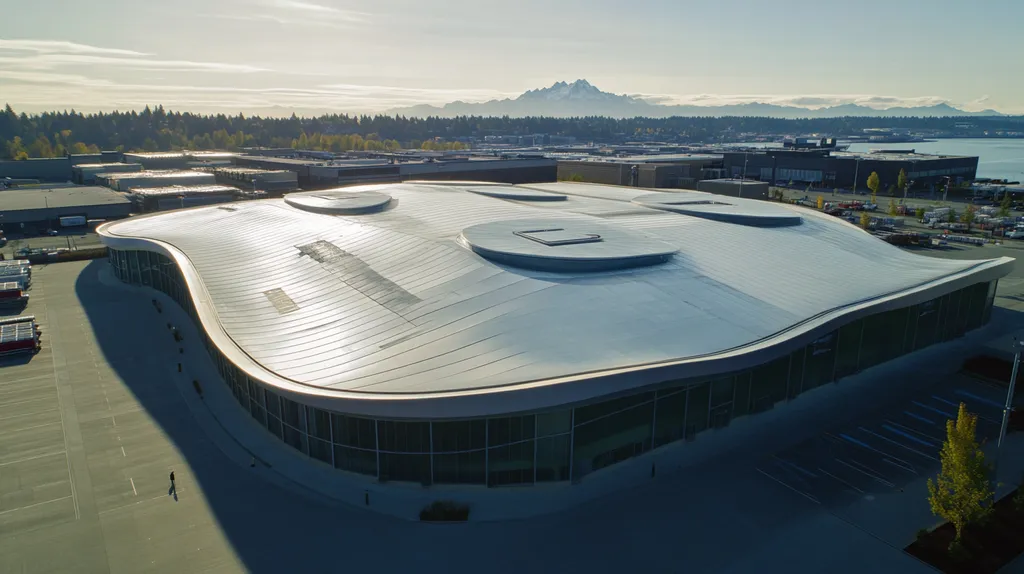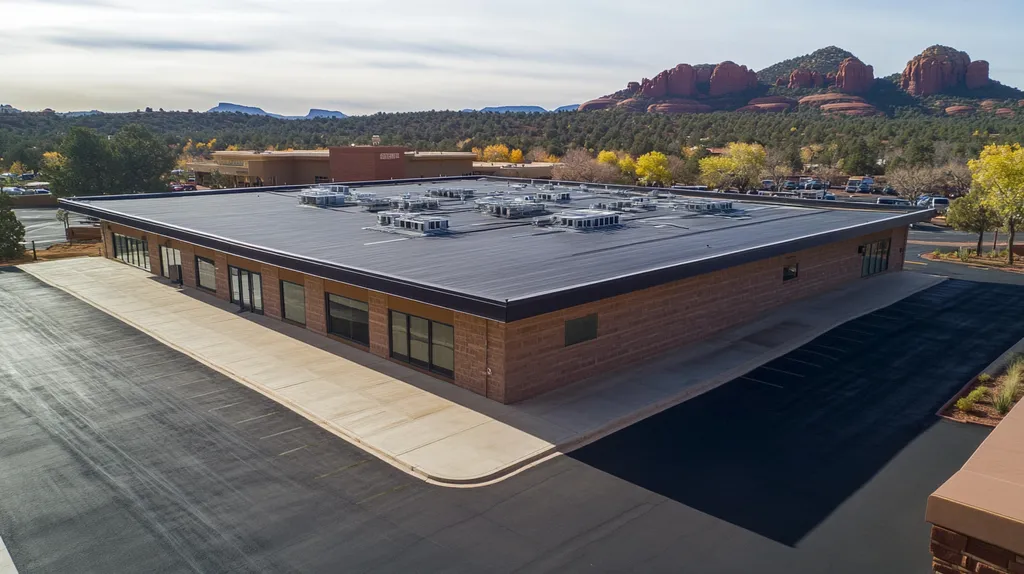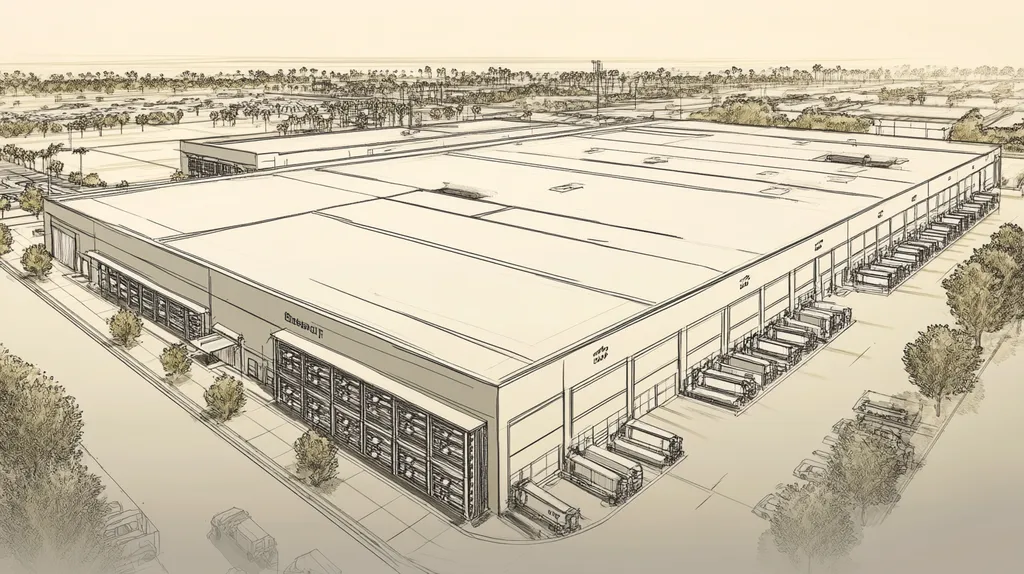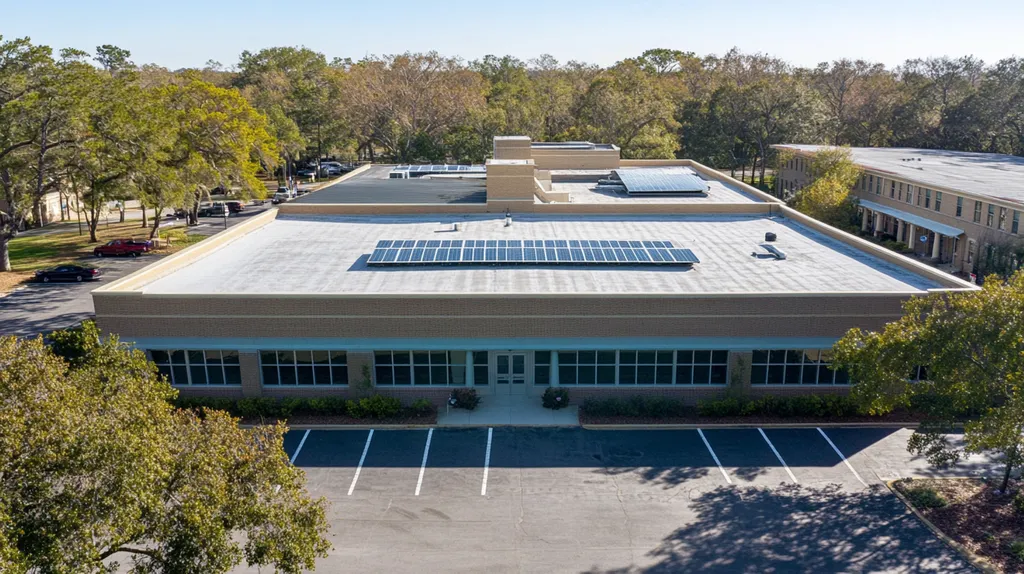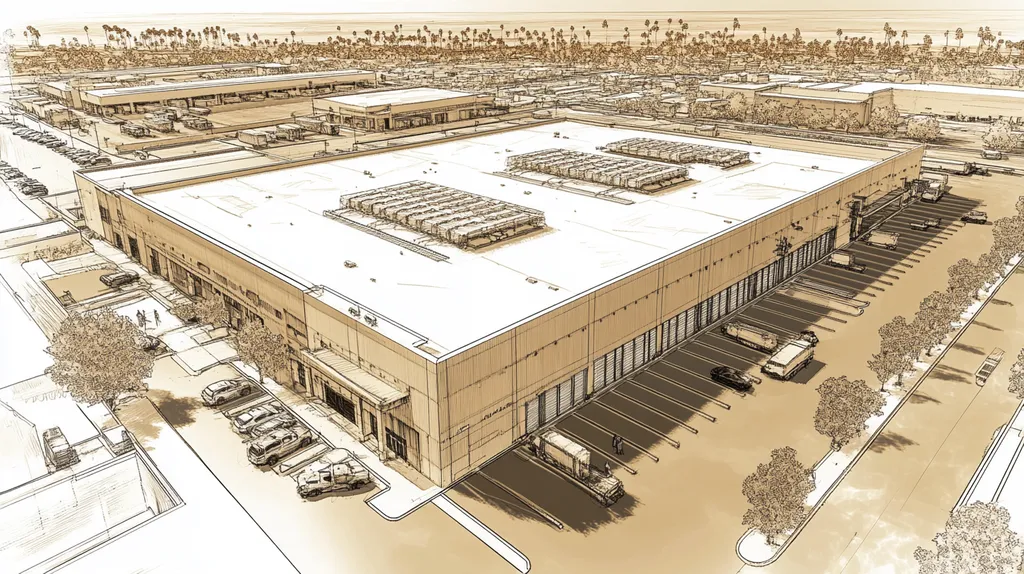Water damage from roof leaks costs U.S. businesses over $5 billion annually, with nearly 40% of all commercial building problems stemming from undetected water infiltration.
For property owners and facility managers, implementing effective leak detection strategies isn’t just about maintenance—it’s about protecting valuable assets, ensuring tenant safety, and maintaining operational continuity.
This comprehensive guide examines critical aspects of commercial roof leak detection, from fundamental concepts and system components to advanced implementation methods and optimization strategies, providing actionable insights for maintaining watertight commercial roofing systems.
SECTION 1: FUNDAMENTAL CONCEPTS
Leak detection on commercial roofs is a vital function that goes beyond mere upkeep; it’s a safeguard for property value, tenant safety, and the overall functionality of facilities. Alarmingly, water damage can cost businesses billions each year, with a considerable fraction stemming from roofing problems. By understanding the causes of roof leaks, the different types of roofing materials, and the principles of moisture detection, property owners and facility managers can take critical steps to protect their investments and mitigate risks.
Causes of Roof Leaks
Roof leaks can arise from a myriad of sources, often resulting in substantial property damage. Weather-related wear and tear, defective materials, and poor installation practices are just a few common culprits. Structural issues, such as settling or shifting foundations, can create weaknesses that further contribute to leaks.
Particularly vulnerable areas include flashings, gaps, and cracks. For instance, if the flashing around chimneys and vents is not properly sealed, water can seep through and cause havoc below. By conducting regular inspections, property owners can identify these weak points, preventing minor issues from escalating into major headaches.
Another frequent source of leaks is clogged drainage systems. When gutters and drains become blocked, water can accumulate on the roof, increasing the likelihood of leaks. Routine maintenance, including clearing drainage systems, can reduce this risk and extend the life of the roof.
Equipped with knowledge about these causes, property owners can take proactive measures. Early recognition of potential problems can lead to significant savings in repair costs and minimize disruptions to operations.
Types of Roofing Materials
The roofing material chosen can greatly affect both the risk of leaks and the effectiveness of detection strategies. Common options include built-up roofing (BUR), single-ply membranes, and metal roofing, each with unique properties and requirements for maintenance.
Build-up roofing systems typically comprise multiple layers of roofing felt and hot asphalt, offering durability but also susceptibility to UV damage. Single-ply membranes like TPO or EPDM can be a cost-effective option but may require diligent inspections to spot punctures or failed seams.
Metal roofing is celebrated for its resilience and long lifespan. However, the natural expansion and contraction due to temperature changes can cause seam failures. Understanding the specific characteristics of each roofing type allows property owners to develop targeted maintenance plans.
A deep understanding of roofing materials empowers property owners to make informed choices. This knowledge also underscores the importance of tailored leak detection techniques that correspond to the vulnerabilities associated with each material.
Moisture Detection Principles
Accurate moisture detection is crucial for catching leaks before they lead to severe damage. Some common methods include visual inspections, thermal imaging, and moisture meters. Utilizing a combination of these techniques can enhance overall leak detection efforts.
Visual inspections are an essential first step but can miss hidden moisture that lies beneath the surface. In contrast, thermal imaging employs temperature variations to detect moisture intrusion, offering invaluable insights that aren’t available to the naked eye. However, this method requires skilled professionals for precise analysis.
Moisture meters are handy tools that measure moisture content in roofing materials. They can reveal elevated humidity levels behind walls or under roofs, allowing for timely intervention before damage worsens. Combining these detection techniques results in more thorough assessments, ensuring that potential leaks are addressed swiftly.
For property owners and facility managers, prioritizing moisture detection is key to an effective roofing strategy. This proactive stance can uncover leaks at their origin, protecting the structural integrity of buildings and minimizing repair expenses.
SECTION 2: SYSTEM COMPONENTS
Water intrusion is a significant threat to commercial roofing that can result in severe damage and costly repairs. Unfortunately, many property owners overlook the essential roofing components that work tirelessly to prevent leaks. A clear understanding of these components is vital for maintaining a watertight roof and reducing repair expenses. This section will highlight the importance of roofing membranes and coatings, flashing and sealants, as well as drainage systems and gutters.
Roofing Membranes and Coatings
Roofing membranes and coatings serve as the first line of defense against moisture penetration. These critical materials create a waterproof barrier that safeguards the underlying layers of the roof. Common options include EPDM, TPO, and PVC, each tailored to meet specific climate demands.
EPDM is valued for its durability and resistance to UV radiation, making it ideal for flat roofs in sunny areas. TPO membranes offer the added advantage of energy efficiency with their reflective surfaces, which can help cut cooling costs. To maintain their effectiveness, routine inspections are essential to confirm these membranes remain intact and functional.
Periodic coatings also play a vital role in extending the lifespan of these membranes. A well-applied roof coating can prevent minor wear and tear from developing into severe leaks. Ignoring the condition of these materials can introduce vulnerabilities that lead to expensive repairs.
In summary, selecting the right roofing membrane and prioritizing regular maintenance can significantly lower the chances of leaks, thus preserving a property’s structural integrity.
Flashing and Sealants
Flashing and sealants are indispensable tools for keeping water at bay, particularly at roof seams, joints, and around penetrations. Flashing, typically made from metal or robust plastic, adeptly directs water away from these vulnerable areas. If flashing is inadequately installed, rainwater can easily infiltrate the roof system.
Sealants function as a complementary measure by filling gaps and cracks that can develop over time. They are especially critical around HVAC units, vents, and skylights. Regular inspections should focus on assessing the condition of these sealants, identifying any signs of aging or deterioration.
For example, using high-quality sealants specifically designed for roofing can significantly decrease the risk of leaks. Unfortunately, many facility managers opt for generic products that may fail to provide a proper seal, leading to premature leaks.
Investing in quality flashing and committing to regular maintenance of sealants is essential to effective leak prevention. This proactive strategy not only preserves financial resources but also ensures operational continuity.
Drainage Systems and Gutters
Properly functioning drainage systems and gutters are crucial for efficiently directing water flow on commercial roofs. Inadequate drainage can cause water to pool on the roof, which increases the risk of leaks and potential structural damage. Effective drainage systems channel water away from the roofing surface efficiently.
Each component of the drainage system, including scuppers, downspouts, and valleys, requires diligent maintenance. Clogged gutters can overflow, leading to conditions ripe for leaks. Regular cleaning and upkeep are vital for avoiding costly future repairs.
Additionally, understanding the slope of the roof is critical for designing effective drainage. A roof with a limited slope may necessitate extra drainage solutions to prevent standing water. Neglecting this detail can result in significant water accumulation and, consequently, leaks.
In conclusion, a strong focus on drainage systems and gutters is fundamental to preventing leaks. Proper management of these components can save property owners from expensive repairs and potential roof replacements.
SECTION 3: IMPLEMENTATION METHODS
Detecting leaks on commercial roofs is critical to preventing expensive structural damage and operational downtime. Water intrusion can lead to repair costs that quickly add up to thousands of dollars, making early detection essential for property owners. This section will delve into three effective leak detection methods: Infrared Thermography, Electronic Leak Detection, and Water Testing and Core Sampling. Each technique brings its own strengths to the table, allowing for timely and efficient leak management.
Infrared Thermography
Infrared Thermography stands out as a leading method for identifying potential leaks before they escalate into major issues. By employing thermal imaging cameras, it detects temperature variations across roofing materials. Cool areas typically signify trapped moisture, indicating the presence of leaks lurking beneath the surface.
This method’s primary advantage is its non-invasive nature, allowing for quick assessments of large roof areas without penetrating the membrane. Timely identification enables targeted repairs, ultimately reducing overall roofing expenses.
Additionally, infrared thermography aids in preventive maintenance by establishing baseline conditions. Routine thermographic inspections can reveal early signs of developing issues, ultimately extending the roof’s lifespan and enhancing asset management.
Incorporating this technology into regular roof evaluations can result in long-term cost savings and help prevent catastrophic failures that disrupt operations.
Electronic Leak Detection
Electronic Leak Detection (ELD) represents another groundbreaking technique for pinpointing leaks. This method leverages electrical conductivity to identify moisture presence in roofing systems. By running an electrical current across the roof surface, property managers can observe where current loss occurs, which often indicates potential leak points.
What sets ELD apart from more traditional methods is its high precision. It can accurately locate leaks in specific areas, facilitating prompt repairs without extensive inspection work. This speed not only minimizes downtime but also reduces repair costs, making ELD an attractive option.
ELD is versatile, proving effective for both membrane and ballasted roofs, thus broadening its applicability. The instant feedback provided by ELD tests empowers property managers to make immediate, informed decisions about needed interventions.
Integrating electronic leak detection into routine inspections enhances the longevity of roofing systems, further preserving their integrity and minimizing total ownership costs.
Water Testing and Core Sampling
Water Testing and Core Sampling are more conventional yet highly effective methods for leak detection. Water testing involves applying a controlled volume of water in critical areas and monitoring for any signs of infiltration. Core sampling takes this a step further by extracting material samples to analyze the roof’s internal structure.
This approach yields valuable insights into the roof’s condition and assesses the effectiveness of prior repairs. Although it is more invasive, it captures critical data that non-destructive methods may overlook.
Core sampling can specifically reveal moisture trapped within insulation layers, a common precursor to long-term roofing complications. By evaluating the health of underlying materials, property managers can make informed decisions on necessary repairs.
While the water testing process may require more time, it provides accurate results that can inform strategic planning. Incorporating these methods into an overarching maintenance strategy can effectively mitigate risks and safeguard property investments.
SECTION 4: MAINTENANCE REQUIREMENTS
The maintenance of a commercial roof is more than just routine care; it is vital for protecting a facility’s longevity and financial health. Statistics suggest that nearly 80% of commercial roofs experience water damage stemming from inadequate maintenance. A lack of proactive inspection and care can lead to severe leaks, significant repair costs, lost revenue, and potential safety hazards. This section outlines essential maintenance strategies to help prevent leaks from evolving into crises.
Regular Inspection Schedules
Implementing a regular inspection schedule is critical for identifying potential issues before they escalate. It is advisable to conduct inspections at least twice a year, particularly before and after severe weather events. A knowledgeable roofing professional should evaluate the roof for signs of wear, water pooling, and compromised seams.
Each inspection provides a unique opportunity to document the roof’s condition, allowing property owners to track changes over time. Maintaining records of inspections and repairs can help anticipate future maintenance needs and budget accordingly. This proactive approach also extends the lifespan of roofing materials; addressing minor problems early can prevent significant repairs in the future.
Failing to schedule regular inspections puts roofs at a higher risk of sustaining serious damage. This is especially true for older roofs or those subjected to heavy foot traffic or harsh weather conditions.
Preventive Maintenance Techniques
Adopting preventive maintenance techniques is paramount for extending the life of a commercial roof. Regular cleaning of gutters and drains ensures efficient water drainage, as clogged systems can lead to standing water—one of the main causes of leaks.
Equally important is the removal of debris from the roof’s surface. Accumulated materials can trap moisture, accelerating the deterioration of roofing layers. Maintaining a clean roof surface not only promotes the effectiveness of protective coatings but also enhances overall roof health.
Additionally, applying a protective roof coating can offer increased water resistance and UV protection. These coatings reduce thermal expansion and contraction, which helps prevent material fatigue and, ultimately, leaks.
A robust preventive maintenance plan should combine regular service checks with necessary updates to existing roofing systems, ensuring optimal performance throughout diverse weather conditions.
Repair vs. Replacement Decisions
Upon detecting a leak, property owners must make a crucial decision: should they repair or replace the roofing system? Several factors influence this decision, including the roof’s age and the extent of the damage. If the roof is nearing the end of its expected lifespan, replacement may be the more economical option.
For local damages or minor leaks, targeted repairs can effectively address the issue. It’s essential that these repairs are carried out by experienced professionals who guarantee quality workmanship. Relying on temporary fixes may lead to further complications, as they often fail to resolve underlying issues.
Thorough assessments are vital when deciding between significant repairs and complete replacements. In some cases, the cumulative costs of ongoing repairs could surpass the investment in a new roof.
Making well-informed decisions based on comprehensive evaluations can lead to long-term savings while preserving the integrity of the entire building, ultimately promoting a safer environment for occupants.
SECTION 5: PERFORMANCE METRICS
Leak detection on commercial roofs is urgent, as undetected issues can lead to substantial repair bills and disruptions in daily operations. Approximately 30% of commercial property owners face roof leaks, causing not only significant financial loss but also operational downtime. Understanding performance metrics enables facilities managers to choose effective detection methods, ultimately influencing building operations and tenant satisfaction.
Leak Detection Accuracy Rates
Accurate leak detection is crucial for maintaining the integrity of commercial buildings. Traditional detection methods often miss up to 40% of leaks, which can lead to more severe issues over time. In contrast, modern technologies such as thermal imaging and electronic leak detection can enhance accuracy rates to 90% or higher, ensuring that potential problems are identified early.
Precise leak detection minimizes false alarms, which helps avoid unnecessary repairs and protects the roofing systems. Property owners should prioritize detection methods that yield measurable accuracy to safeguard their investments. By regularly assessing detection technologies, facilities managers can ensure they are employing the most effective strategies available.
Investing in high-accuracy detection methods not only alleviates immediate leak concerns but also contributes to long-term savings. Over time, improved detection capabilities lead to fewer instances of major leaks and reduced overall roof maintenance costs.
Cost-Benefit Analysis of Detection Methods
A thorough understanding of the cost-effectiveness of leak detection methods is vital for facilities management. While traditional techniques may seem cheaper upfront, they often lead to costly long-term consequences due to undetected leaks and extensive damage. Upfront investments in advanced detection technologies can prevent massive repair expenses down the line.
For example, spending $10,000 on a high-tech detection system could potentially save $50,000 or more in structural repairs caused by overlooked leaks. Facilities managers must conduct detailed cost-benefit analyses, weighing both direct and indirect costs of each method.
Analyzing savings from averted repairs and reduced operational disruptions highlights the true value of advanced approaches. Ultimately, smart investments in reliable leak detection technology bolster budget efficiency, allowing for resources to be allocated to other essential building improvements.
Impact on Building Operations
Effective leak detection directly influences building operations and enhances tenant satisfaction. A well-maintained roof not only creates a safe environment for occupants but also minimizes the risk of hazardous scenarios and emergency repairs. Proactively addressing leaks allows facilities managers to implement routine maintenance without costly disruptions.
Adhering to regular maintenance schedules promotes enhanced operational efficiency and overall building performance. Furthermore, robust leak detection strategies can elevate property values. Well-maintained properties attract higher-quality tenants and fetch better lease rates, ensuring repeat occupancy.
In conclusion, monitoring performance metrics in leak detection is essential for ensuring the longevity of commercial roofing systems. By prioritizing effective methods, property owners can protect their buildings and provide a more satisfying operational experience for all stakeholders.
SECTION 5: PERFORMANCE METRICS
Leak detection on commercial roofs is a pressing necessity; unchecked leaks can quickly escalate into expensive repairs and operational setbacks. Research indicates that around 30% of commercial property owners encounter roof leaks, leading to significant financial burdens and downtime. By grasping performance metrics, facilities managers can make informed decisions about detection methods, which ultimately affect building operations and tenant satisfaction.
Leak Detection Accuracy Rates
Accurate leak detection is essential for effective building maintenance. Traditional methods often miss up to 40% of leaks, paving the way for larger, more costly issues. However, modern technologies—such as thermal imaging and electronic leak detection—can boost accuracy rates to 90% or higher, significantly enhancing early problem identification.
Employing precise leak detection methods helps minimize false alarms, reducing unnecessary repairs and protecting the integrity of roofing systems. Therefore, property owners should prioritize strategies that deliver measurable accuracy to safeguard their investments.
Routine evaluations of detection technologies ensure that facilities managers implement the most effective techniques available. Accurate leak detection allows managers to proactively tackle issues, significantly lowering the risk of severe damage over time.
Investing in high-accuracy detection methods leads to favorable long-term outcomes, resulting in fewer major leaks and reduced overall roof maintenance costs.
Cost-Benefit Analysis of Detection Methods
Understanding the cost-effectiveness of various leak detection methods is crucial for facilities management. Traditional methods may showcase lower initial costs but can lead to far greater expenses in the long run due to missed leaks and widespread damage.
While advanced detection systems might require a larger upfront investment, the savings generated from averting major repair work can be impressive. For example, spending $10,000 on a sophisticated detection system could potentially prevent $50,000 or more in structural repairs.
Facilities managers should conduct a comprehensive cost-benefit analysis, comparing both direct and indirect costs associated with each detection technique. Evaluating potential savings from avoided repairs and reduced operational interruptions illustrates the substantial value of more advanced approaches.
Ultimately, investing in reliable leak detection technologies enhances fiscal responsibility. A well-informed decision regarding detection methods can yield significant returns, freeing up resources for other essential building improvements.
Impact on Building Operations
Effective leak detection has a direct and significant impact on building operations and tenant satisfaction. A consistently maintained roof not only provides a safe environment for occupants but also mitigates the risk of hazardous conditions and costly emergency repairs.
Proactively monitoring for leaks promotes operational efficiency, allowing facilities managers to perform routine maintenance without the disruptive need for emergency interventions. This adherence to regular maintenance schedules contributes to improved overall building performance.
A strong leak detection strategy can also enhance property value. Buildings known for high-quality maintenance attract better tenants and command higher lease rates, which ensures lower vacancy rates and a more stable income stream.
In conclusion, monitoring performance metrics in leak detection is essential for the long-term sustainability of commercial roofing systems. By prioritizing effective methods, property owners can protect their assets and significantly enhance the overall operational experience for all stakeholders.
Looking Ahead
With commercial roof leaks causing over $5 billion in annual damages across the U.S., implementing comprehensive leak detection strategies is no longer optional—it’s imperative for protecting property values and operations.
The integration of advanced technologies like infrared thermography and electronic leak detection, combined with systematic maintenance protocols, can prevent catastrophic failures that often result in six-figure repair costs.
Property owners who adopt proactive detection methods typically reduce their annual maintenance costs by 35% while extending roof lifespans by up to 40%.
As climate patterns become more extreme and building systems grow more complex, the investment in robust leak detection programs will become increasingly critical for protecting commercial real estate assets and ensuring business continuity.
FREQUENTLY ASKED QUESTIONS
Q. What causes leaks in a commercial roof?
A. Leaks in a commercial roof can occur due to various factors. Common reasons include weather-related wear, poor installation practices, and defective materials. Areas like flashings, gutters, and seals are typically the most vulnerable spots, prone to wear and damage over time.
Q. How do drainage systems affect an industrial roof?
A. Effectively functioning drainage systems are crucial for an industrial roof to prevent water pooling. If drains or gutters are blocked, water can accumulate, increasing the likelihood of leaks and structural damage. Regular maintenance of these systems ensures proper water flow and protects the roof.
Q. What is Infrared Thermography for leak detection?
A. Infrared Thermography is a non-invasive technique used for leak detection. It uses thermal imaging to identify temperature differences on the roof surface, indicating trapped moisture. Early detection of leaks helps prevent severe damage and costly repairs, making it a valuable method for property owners.
Q. How often should I inspect my commercial roof?
A. It’s recommended to inspect your commercial roof at least twice a year. Inspections should be conducted before and after severe weather, allowing you to catch any early signs of leaks or wear. Regular evaluations can prolong the longevity of roofing systems and minimize future repair costs.
Q. What are key maintenance strategies for commercial roofs?
A. Essential maintenance strategies include regularly scheduled inspections, preventative cleaning, and timely repairs. Keeping gutters clear and removing debris helps prevent standing water. Additionally, applying protective coatings can enhance durability and prevent leaks, significantly extending the life of the roof.
Q. What impact does proper leak detection have on building operations?
A. Effective leak detection significantly influences building operations by maintaining a safe environment and avoiding emergency repairs. Proactive monitoring allows for routine maintenance without disruptions, improving overall efficiency. Well-maintained roofs increase property value and tenant satisfaction by preventing hazardous conditions.
Q. How do I choose the right roofing material for my commercial roof?
A. Choosing the right roofing material involves considerations like climate, budget, and intended use. Options like EPDM and TPO cater to specific needs, balancing durability and cost. Consulting with roofing professionals can provide insights tailored to your building’s unique requirements and conditions.


